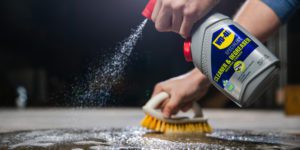Making the Upgrade
Making an upgrade while a spindle is already down and due for repair makes economic sense and makes the most of an opportunity. But what types of upgrades can be performed and what benefits can be expected? Ed Zitney of SKF Machine Tool Services explains.
Posted: November 26, 2012
Making an upgrade while a spindle is already down and due for repair makes economic sense and makes the most of an opportunity. But what types of upgrades can be performed and what benefits can be expected?
Machine tool spindles can be remanufactured cost effectively many times over when attention is squarely focused on the parts or components causing the problems. When turning the spindle over for repairs, the time may also be right to consider upgrading or otherwise customizing the spindle to realize improved performance, gain greater versatility, and/or accommodate new or changing application requirements.
Making an upgrade while a spindle is already down and due for repair makes economical sense and makes the most of an opportunity. But what types of upgrades can be performed and what benefits can be expected? Some upgrades for spindles can be relatively simple to implement, while others may become more involved. All can help improve upon spindle performance and operation.
Increasing your spindle’s speed is one of the most useful upgrades. Changing a shaft tool interface is sometimes needed to accomplish this process. Going from a standard CAT taper to an HSK tool interface is usually the best upgrade, due to its benefits at high speeds.
Among other basic upgrades, converting from all-steel bearings to hybrid bearings that integrate silicon nitride (ceramic) rolling elements can allow a spindle to run at higher speeds and at lower operating temperatures. These hybrid types of bearings will additionally offer inherent insulating properties and exhibit superior wear resistance to promote optimized performance and longer service life.
Other examples of common spindle upgrades include increasing or decreasing the preload to the bearing setup, which can enable a spindle to run faster at higher rpm or to gain rigidity and run slower at lower rpm, based on your requirements. Changes in bearing configurations can be made to create a faster or more rigid spindle. Changing a pulley style from a flat belt to a Polly “V” can result in better tracking, less slip, and more power to the spindle.
Protecting spindles in very high contamination areas suggests potential upgrades involving sealing systems and air purges as solutions. The overriding objective is to keep contaminants such as coolant, water, oil, metal, aluminum, grinding grit, and any material being machined from entering the spindle and destroying the bearings. Incorporating seals will help accomplish this goal and the addition of a labyrinth sealing system can further block the ingress of contaminants. Labyrinth systems will normally require new parts, including cap and nut.
The purpose of an air purge, which can be simple or quite complex, is to create positive air pressure inside the spindle. The pressure can be purged through strategically placed porting and exits, which subsequently makes the ingress of contaminants difficult.
Among more sophisticated upgrades for spindles, changing from a belt-drive, gear-drive, or coupled-drive spindle to a self-contained motorized spindle offers advantages by eliminating the separate drive motor and belts to create a highly efficient solution in an overall smaller and compact package. A spindle’s tool interface also can be changed to provide faster-running performance, accommodate larger (or smaller) tools, operate more efficiently and accurately, and allow for quicker tool changes.
Increasing the length or diameter of a spindle will allow for making deeper bores and/or increasing a spindle’s rigidity. Even specifying larger-diameter bearings can have a positive effect in handling heavier loads. However, upgrades to bearings that will carry heavier loads may require the redesign of the shaft and housing modifications, as well as selecting a better class of bearing.
The following story documents one of the more interesting recent spindle upgrades from our customer files. The operation was experiencing repeated incidents of motor coolant clogging and environmentally related problems with an oil mist lubrication system. Spindles essentially were failing repeatedly due to plugged coolant lines, which resulted in overheated motors, and the persistent need to monitor both the coolant and mist lubrication systems consumed time and money. Our solution was to totally replace the spindle with an air-cooled grease-packed version.
This particular air-cooled spindle resolved all the problems plaguing the motor coolant system and eliminated the costs for coolant tank, pump, and air oil supply. Contamination and clogging disappeared, motors no longer overheated due to clogged coolant lines, and spindle uptime increased. Other benefits and savings followed, too. The greased packed bearings have reduced lubrication failures and clogged lubricating ports, adjustment of the machine by operators has been made easier without obstructions from hose lines, and environmentally related concerns about the effects of oil mist have evaporated.
Even more dramatic from the “green” perspective, the new 5½ hp spindles (compared with the old 15 hp spindles) running at 18,000 rpm have achieved documented power savings by matching the spindle to the required job and not overpowering the spindle. The overall power savings have resulted in an annual reduction of 7000 kW per hour per spindle per 8-hour shift, which multiplies significantly, since four spindles are running five days per week at three per shifts every day.
In addition to resolving the coolant and mist lubrication system issues and helping this customer advance overall “green” and power-consumption objectives, there was more good news. The power savings were so significant that the local power company provided a rebate as part of its program to reduce the need to construct new generating facilities.
Ultimately, the customer benefited by replacing less efficient equipment with more efficient equipment, which is the overriding goal during remanufacturing or upgrading “when a good spindle goes bad.”















